For its first decade, most Magic stories took place on the same plane, Dominaria. The game tracked this sprawling plane over several millennia, creating a sense of scale and temporal scope that kept it from feeling stale, but also led to lore-bloat. Looking at Jay Annelli’s outline of the major landmasses of Dominaria is instructive: Magic creative in 1993-2002 appears to be mostly looking at a map and saying “think we can fit another burning hellscape of volcanic bog or an island of aloof wizardly scholars in there?”
Because everything took place on a single world, there was a lot of redundancy. While story hounds knew the difference between an Argivian Academy and a Tolarian Academy or between a Shivan lava monster versus a Rathi Flowstone lava monster versus a Bogardan lava monster, there wasn’t enough aesthetic difference for lay players. Magic’s style guide was still developing—to the game’s credit, as the art style between 1996-1999 was more fluid and professional—and archetypes were still being set.
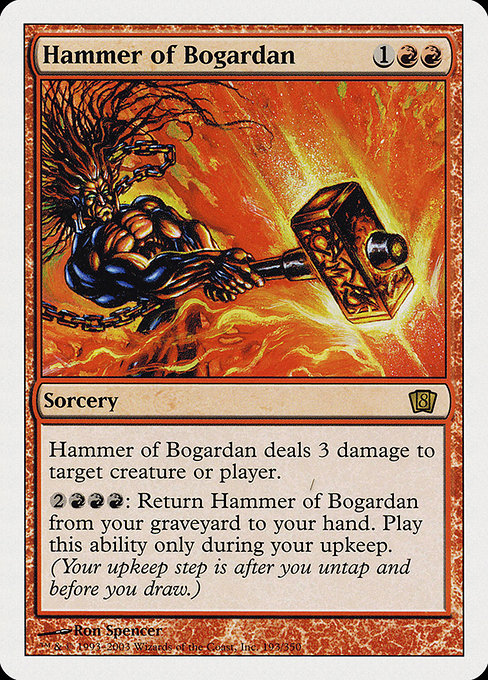
Early Magic was deeply indebted to Dungeons and Dragons, which means it was deeply indebted to Tolkien, but where Magic stood apart was in linking specific types of magic not to schools of thought, but to biomes. “Black magic” became linked in the minds of players not to subterranean crypts and chthonic ossuaries, which most people never see, but to the relatively mundane terrain of bogs and marshes. Magic resonated because it fused landscapes with more abstract schools of thaumaturgy—something that we’ve long accepted in folklore and fairy tales.
In other words, Magic’s success and its history is irretrievably tied to the landscapes of Dominaria. While we briefly visited other planes in Homelands, Tempest Block, and Urza’s Block, the first decade of Magic never strayed far from Dominaria, even as we were told the Multiverse was replete with fantastical planes.
That’s not to say there weren’t interesting places to explore on Dominaria: The Dark took place in a city of paranoia and zealotry, Fallen Empires in declining societies experiencing near-apocalyptic resource scarcity, Ice Age in a Viking-influenced wasteland, Mirage in a vibrant and humid tropical continent, etc. These could have been standalone planes, but that wasn’t the model back then. All these disparate environments had to fit on a single globe and each new society we were introduced to had to have, on some level, a close-knit society of martial nomads, some form of scholars, scheming necromancers, bellicose barbarians, and forest-dwelling woodsfolk.
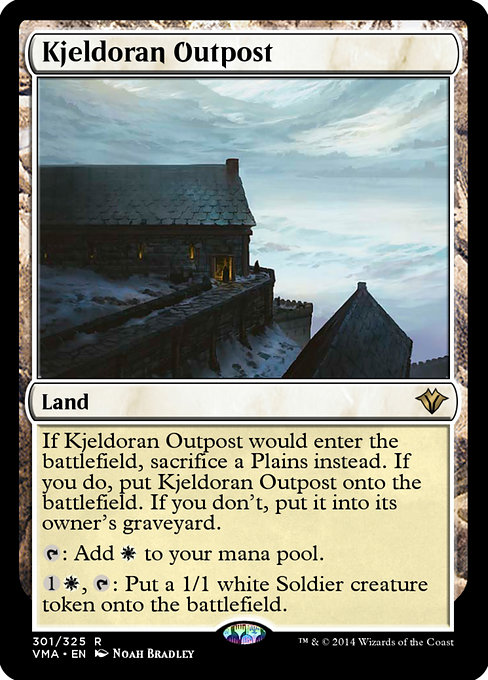
This means that Wizards was basically recreating Dominaria in microcosm each time we visited a new continent, with the five basic land types being represented on each, and each environment-molded society having to fill the same niche it did in the last. Thus, the Kor of Rath were combat-oriented small creatures, just as the Zhalfir of Jamuraa were, just as the Kjeldoran forces of Ice Age were, and the Icatians, and so on. I doubt many Magic players, even those invested in the game for several decades, could articulate the difference between a Femeref Healer, a Samite Healer, and a Daru Healer.
The introduction of the planar craft Weatherlight in 1997 opened up new opportunities for Magic, but since it was shackled to a story with a defined endpoint—the Phyrexian invasion of Dominaria—it didn’t allow much time to explore. In the four years of the Weatherlight Saga, the crew visited two planes aside from Dominaria: Rath (Tempest, Stronghold, Exodus, Nemesis) and Mercadia (Mercadian Masques).
Following Masques and continuing the stake-raising, we got one set of Phyrexia, by way of Rath, preparing for the Invasion, and one set of Dominaria, by way of Jamuraa, wrapping up past story lines before the Rathi incursion. In some way, either major or minor, all of Dominaria’s history had been leading up to this point—all of the various societies we’d been introduced to since 1993 were going to band together and fight against Armageddon.
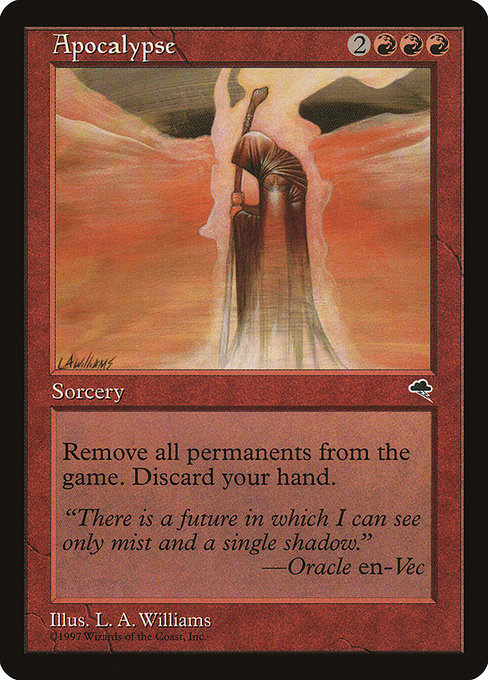
Once Apocalypse had been announced, it was assumed that Wizards would blow up Dominaria—and then, simply, they didn’t. Some members of the Weatherlight crew became martyrs, but for the most part, the Phyrexian Invasion was resoundingly rebuffed, albeit at a great cost, and Dominaria just went on as the Weatherlight sailed off into the sunset.
Following this anticlimax, Odyssey and Onslaught blocks’ setting was ridiculous—a previously-unestablished continent called Otaria that just happened to avoid the brunt of the Phyrexian apocalypse and had never been mentioned before 2001. It jettisoned Merfolk for octopusfolk called Cephalids and cranked up the millennial edginess, but was otherwise the same Dominaria.
Standing apart from the just-wrapped Weatherlight Saga, Otaria set the model for the coming three-set-block model, with the introduction of a new world, the escalation of a crisis, and then an apocalyptic event. It just didn’t hop planes, and instead carbon-copied elements of Dominaria in a return to form—Aphetto is just another Urborg, Krosa another Llanowar, etc. There was a lot of technical experimentation in Odyssey Block especially, and I have an abiding fondness for it, and for Onslaught Block for establishing my love of Zombie tribal decks, but creatively, it was a dead end for the game. The story of the two blocks was a mess, and repetitive (and rushed) after the long buildup to the previous apocalypse.
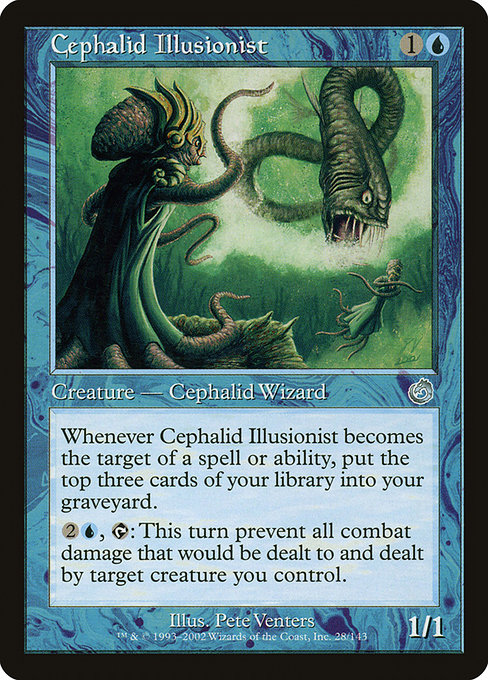
Dominarian names and histories were what made Magic Magic. But by 2002, Dominaria was tired. It had undergone several apocalypses, had its map fully fleshed-out with various “lost” continents, and had been established as the baseline for Magic’s aesthetics: goblins were wiry green guys, Wizards were generally Gandalfian, Clerics carry glowing bottles, etc. etc. We’d explored what a nomadic society of warriors looked like in Zhalfir, Leitbur, the Daru Plains, Femeref, Kjeldor, New Argive, Benalia, etc.
As we headed into the summer of 2003 with the news that Magic would be getting a new card face with 8th Edition, it felt like some of the bloom was off the Lotus and that Magic was scrabbling for relevancy after Pokémon picked up some of its audience. We had expected to say goodbye to Dominaria, and yet here we still were. It had been ravaged by Phyrexian plagues, phased into nonexistence by Teferi or turned into a smoking ruin by Urza or Barrin, overrun by Slivers, mutated into oblivion by the Mirari, and rift by wars, either small scale or apocalyptic, but it still stood.
Then came Mirrodin.

With twenty years of perspective, I really do appreciate Wizards ripping the bandage off and going directly from “proto-industrial tech, but only for the elite” to an off-the-wall world swarming with magic robots. It’s a huge swing, without a lot of preparatory time for your audience. The dissonance of the card backs—the outdated Deckmaster label, the errant pen stroke, the stilted name of “Magic: the Gathering”—against the slickly redesigned card face and the argent glint of Mirrodin felt like a shift to something new and different and, to some, undesirable.
The past twenty years have underlined what an odd time the millennial cusp was: an end-of-history dream of translucent plastic and stolen elections and inflatable furniture and existential threats. From a personal perspective, I had just turned seventeen when Mirrodin came out, after spending my teens chewing through high fantasy tomes and slapping Phyrexian Gargantua down on study hall tables, and I bounced right off the setting entirely, mostly because of exactly that: the setting. I had no connection to the world of Mirrodin, with its glowing miasmatic swamps and spires of razorgrass and glimmering mirrors instead of the fields of sunflowers and Appalachianesque ridges we’d become used to on Dominaria. Dominaria felt like Earth; Dominaria felt like home.
There’s a through line from the metallic zombies of Phyrexia in 1998-2001 to the Nim of Mirrodin, but other aspects of the set were more jarring: the Myr were outright automatons, the “magepunk” ethos of the Auriok was more Tank Girl than Tahngarth, and the omnipresence of Affinity and Skullclamp meant that tournament play was monotonous and literally robotic. The block was, to put it mildly, polarizing. Rather than return to Dominaria to reset expectations after Mirrodin, we went to Kamigawa, and then Ravnica.
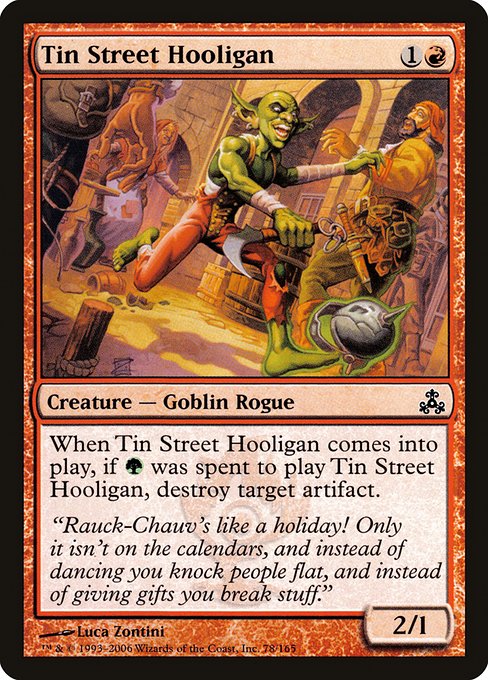
Ravnica changed the game entirely: with the advent of the guilds, color became an outcome of philosophy, rather than environment. You could grow up in Tin Street right alongside your neighbor, but their temperament and sense of justice could drive them to the Boros, while your sadism and poor impulse control could lead you to the Rakdos. Ravnica, like Invasion before it, saved Magic after a two-year period of disruption, and was the lead-in to a less-successful but fascinating block: Time Spiral.
Our return to post-apocalyptic Dominaria was challenging, with a hilarious glut of mechanics, a gimmick based on recreating the original feeling of exploring Dominaria, from Squires to Slivers, but from a creative standpoint, it was a masterpiece, a victory lap that could have easily been a swan song.
Now, after thirty years, and more than twenty since the original Phyrexian Invasion, we’re circling back for a homecoming. The stakes, surprisingly, are the same as they were when I was fifteen: Phyrexia has come with the express intent of destroying the place and turning it into another hellscape of screaming metal and putrid flesh. We’ve spent years collecting allies and foiling Phyrexian plots, with Karn seeking a nuclear bomb to use against the plane, Vorinclex snagging a sample of godhood-bestowing Tyrite from Kaldheim, and Jin-Gitaxias compleating the first Phyrexian planeswalker.
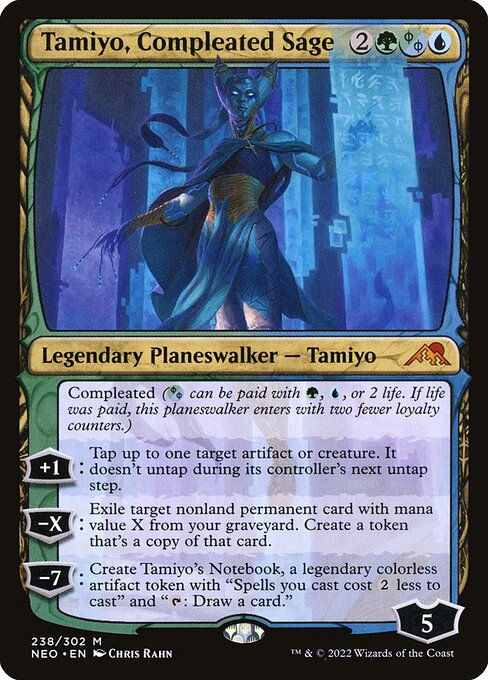
After the success of 2017’s Dominaria, I doubt Wizards is angling to blow up the plane—but then again, I thought the opposite back in 2001, so I may well be wrong once more.
A lifelong resident of the Carolinas and a graduate of the University of North Carolina, Rob has played Magic since he picked a Darkling Stalker up off the soccer field at summer camp. He works for nonprofits as an educational strategies developer and, in his off-hours, enjoys writing fiction, playing games, and exploring new beers.

